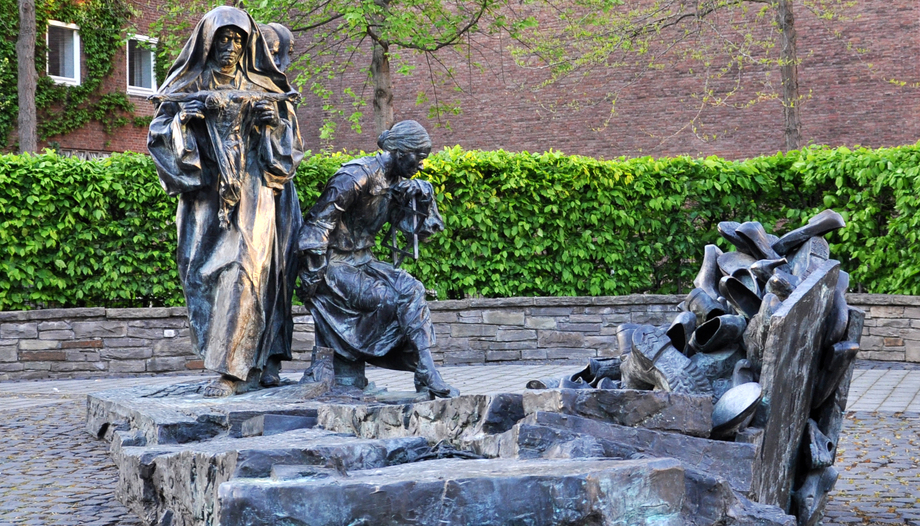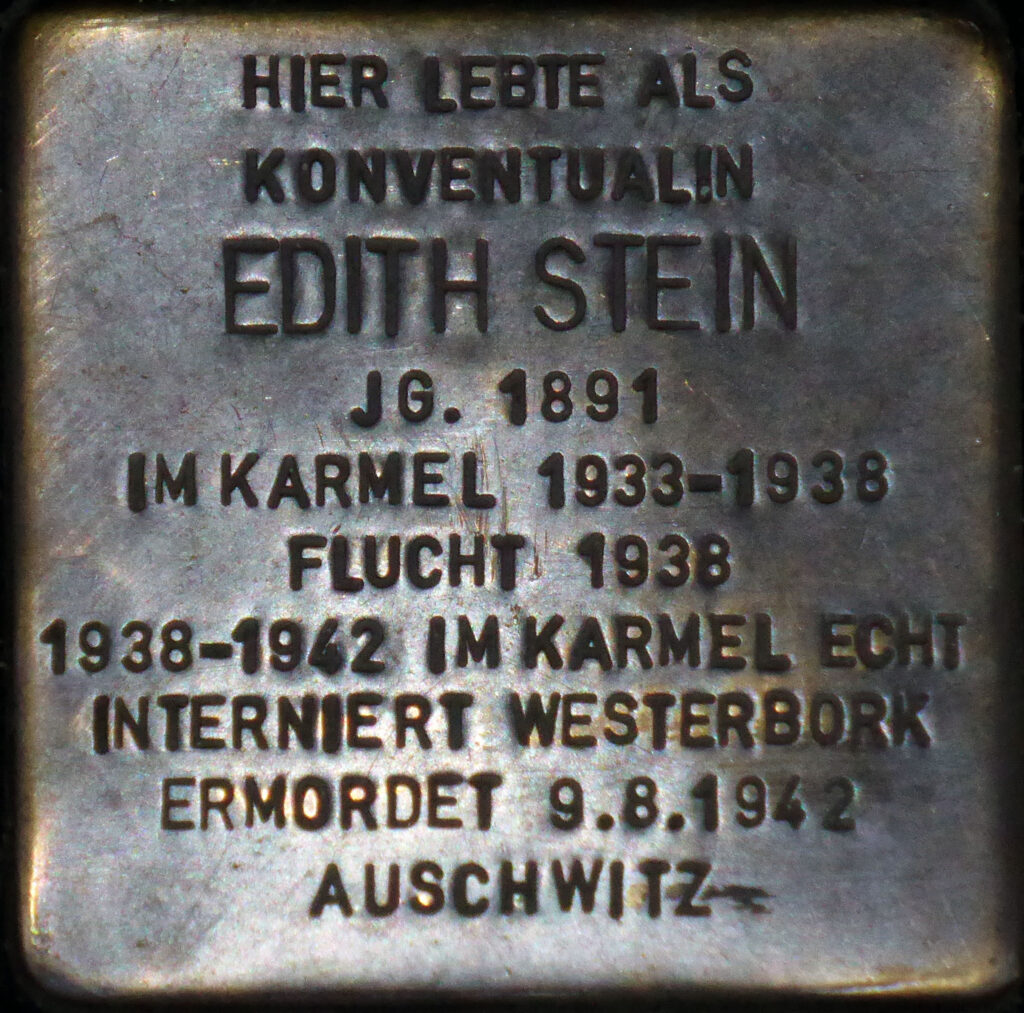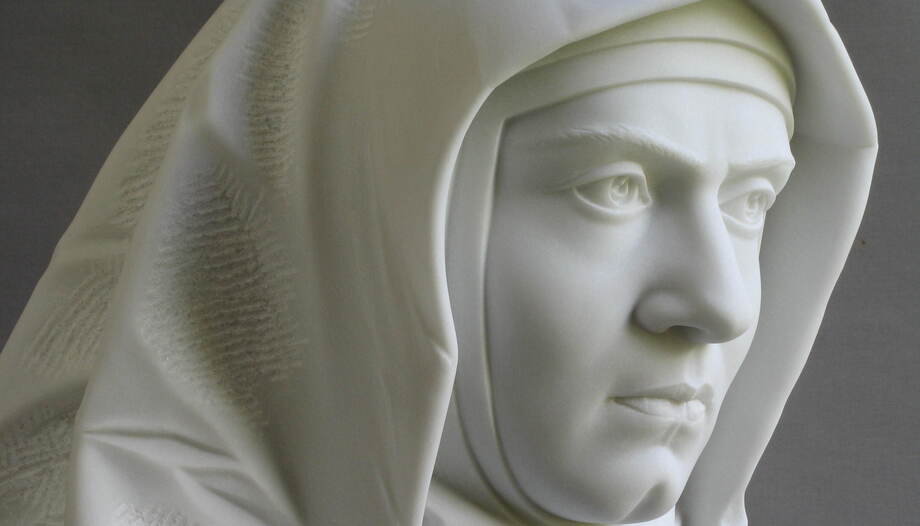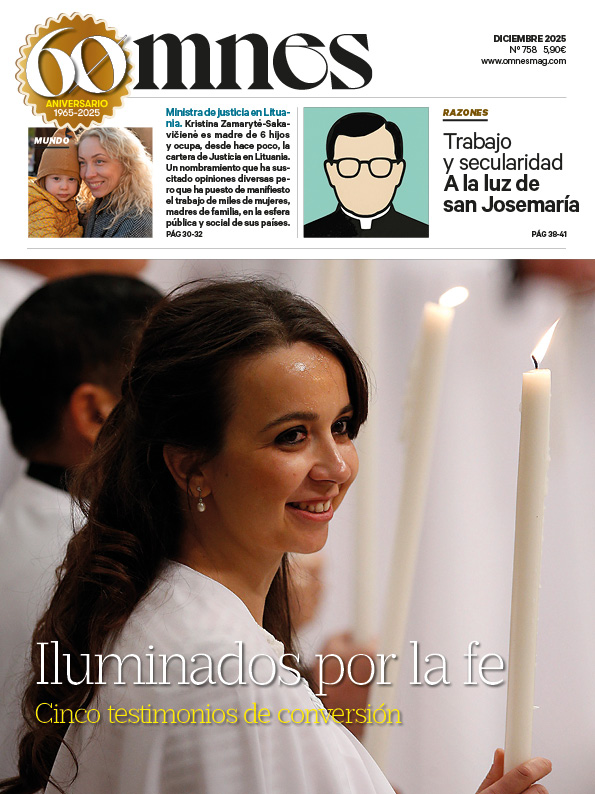"Come, let's go for our people." With these words, Edith Stein addressed her sister Rosa on the notorious Auschwitz ramp on August 9, 1942, on her way to the gas chamber. On August 2, both Carmelite nuns had been arrested in Utrecht along with 244 other Catholic Jews, in retaliation against Dutch bishops who publicly criticized the Nazi occupation. The words Edith Stein had written years earlier proved prophetic: "The world is on fire: the battle between Christ and the Antichrist has openly broken out; if you decide for Christ, it may cost you your life". Edith and Rosa were murdered because of their Jewish ancestry.
For Edith Stein, being a Christian and a Catholic without denying her Jewish roots was not a contradiction. She was baptized at the age of thirty, on January 1, 1922, the day of Jesus' circumcision; she deliberately chose this date to emphasize that her conversion was not a renunciation of Judaism. In Cologne, since 1999, a bronze monument entitled "Group with a saint" has stood in front of the archbishop's seminary. The woman seated on the stool, leaning thoughtfully on a Star of David, represents the young Edith Stein. Standing is the nun holding Christ on the cross.

As a religious name she chose Teresia Benedicta a Cruce, "blessed by the cross". One of her main works is entitled "The Science of the Cross". She not only carried the cross after her arrest, but also during the painful estrangement from her family after her baptism. At her beatification on May 1, 1987, Pope John Paul II described her as "Jewess, philosopher, nun and martyr".
The search for truth
She was born in Breslau on October 12, 1891, on Yom Kippur, one of the most important Jewish holidays. During a stay with her sister Elsa and brother-in-law Max Gordon in Hamburg in 1906, the 15-year-old later recounted, "I deliberately stopped praying, of my own free will." However, her search for truth continued throughout her life.
In Hamburg, she first came into contact with scientific thought, as Max was a physician. In the fall of 1911, Edith enrolled at the University of Breslau to study Germanic philology, history and philosophy. She soon discovered the work of the philosopher Edmund Husserl and his phenomenology.
Husserl sought direct access to phenomena by eliminating preconceived ideas about appearances. His aim was a "pure" awareness of things as they objectively are. "Toward things themselves," was Husserl's maxim, which Edith Stein followed enthusiastically. After her doctorate, she worked as an assistant to this professor and devoted herself intensively to research.
Edith Stein wrote her dissertation for a professorship, but was rejected by the faculty in Göttingen as well as in Kiel and Hamburg. As a woman, and a Jew, she had no chance. In the early years of the Weimar Republic, she wrote treatises on national politics and increasingly reflected on her own image of God.
Edith Stein's baptism
She studied the Spiritual Exercises of St. Ignatius of Loyola and the mystical writings of St. Teresa of Avila, an encounter that led her to baptism, without rejecting Judaism. Edith Stein recognized the links between the two religions and never denied what Christianity owed to Judaism. However, her baptism came as a shock to her family. Her niece Susanne Batzdorff-Bieberstein recalled: "By becoming a Catholic, our aunt had let her people down".
After her baptism, Edith Stein worked as a German teacher at the Dominican convent of St. Magdalen in Speyer. Although she initially lived outside the convent walls, she drew closer to the monastic life. She continued her scientific search for truth in her works of religious philosophy and immersed herself in the truths of faith by following the "Quaestiones disputatae de veritate" of St. Thomas Aquinas.
Edith Stein sought new ways to relate reason to faith and to fill it with her own experience of God. She compared the modern phenomenology of her great model Husserl with the teachings of Aquinas: "Our age is no longer satisfied with methodological considerations. People are unstable and are looking for a foothold. They want a tangible, substantive truth, to be demonstrated in life. They want a 'philosophy of life,' and they will find it in Thomas Aquinas."
Patroness of Europe

After the Nazis came to power, Edith Stein was forbidden to do any public work. In 1935, at the age of 44, she entered the contemplative order of the Discalced Carmelites and took the name Teresia Benedicta a Cruce. On December 31, 1938, she fled to Holland, where she lived in the Carmel of Echt and wrote her testament, in which she offered her life and death to Christ for the sanctification of her order and to "atone for the unbelief of the Jewish people".
Despite criticism from the Jewish side, because she was not killed because of her Christianity but because of her Jewish origins, she was beatified on May 1, 1987, and canonized on October 11, 1998. A year later, St. John Paul II included her among the patronesses of Europe.
Edith Stein's life was characterized by a constant search for truth and a deep desire for spiritual and intellectual fulfillment. Her commitment to philosophy and her subsequent entry into Carmel bear witness to her unwavering dedication to her convictions and her faith. His murder in Auschwitz remains a testimony to the immeasurable suffering experienced by the Jewish people during the Shoa.











